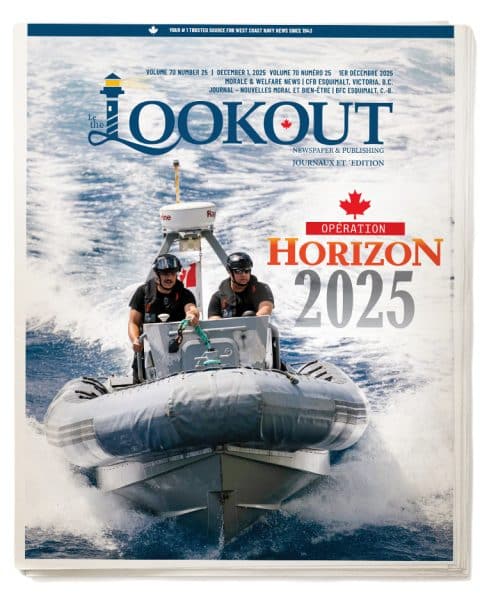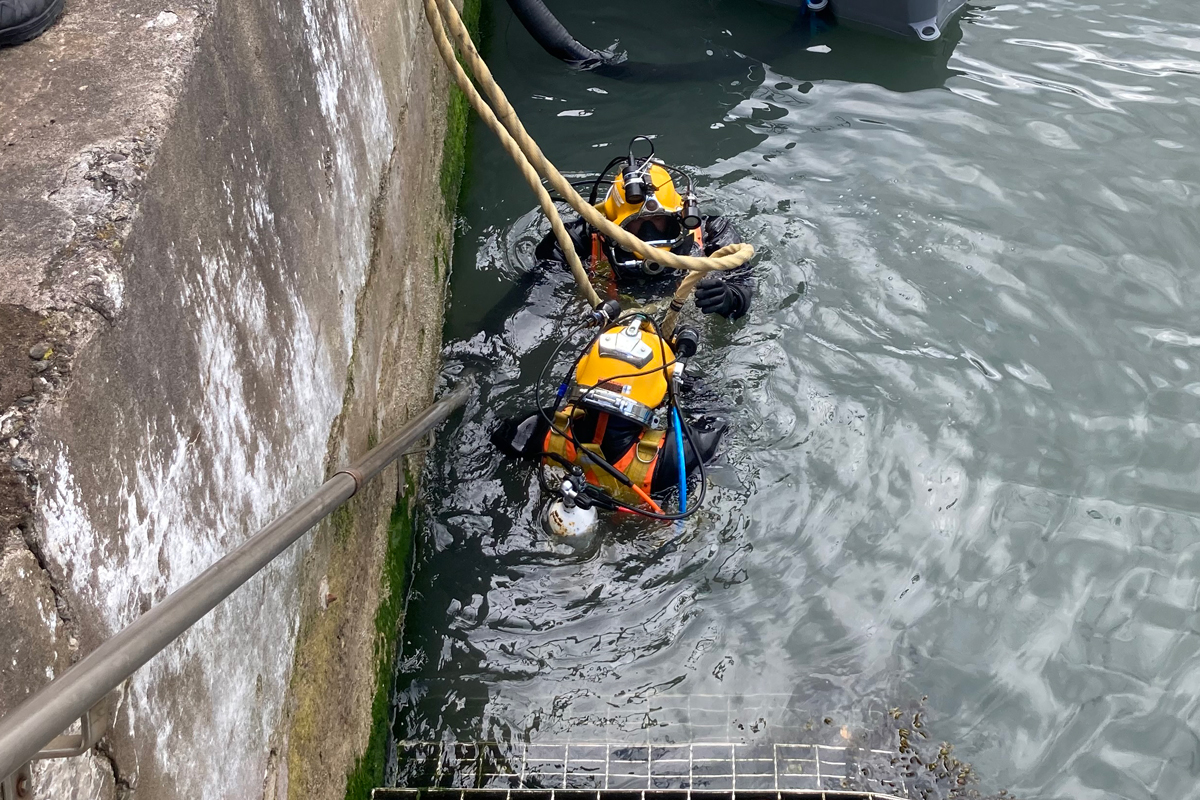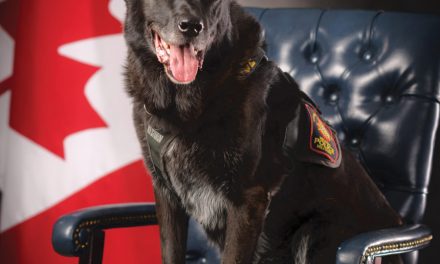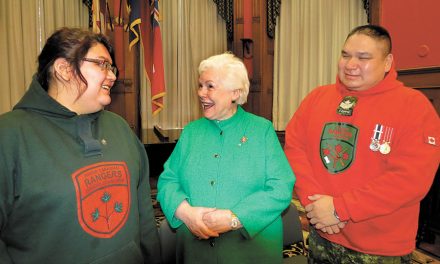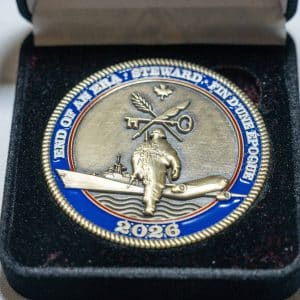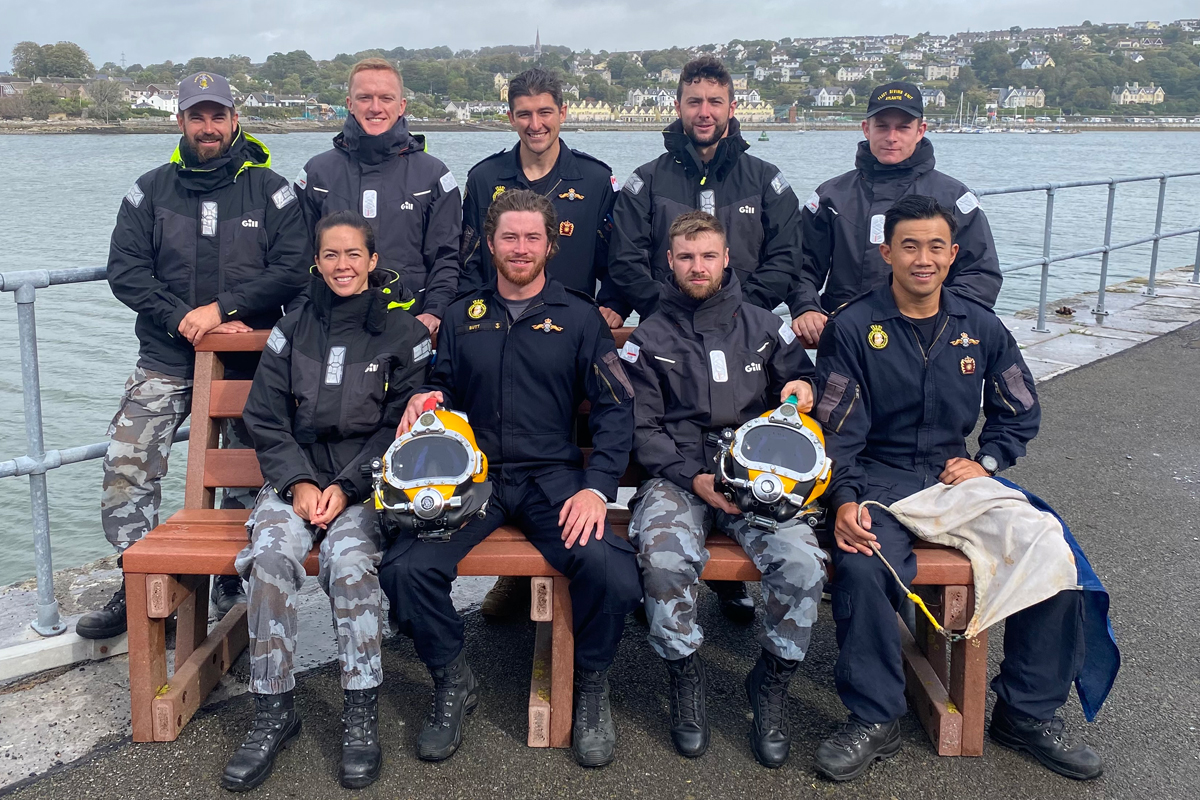
Members of Fleet Diving Unit (Pacific) gather for a group shot with their team members of the Irish Naval Service during Operation Regulus at Naval Base Haulbowline in Cork County Ireland. The five-week equipment training course focused on 50 m Surface Supplied Diving Equipment. Photos: FDU(P)
Peter Mallett,
Staff Writer
—
Three Royal Canadian Navy (RCN) Clearance Divers (two from Esquimalt and one from Halifax) took the plunge at an Irish Navy base to clear out the mud bottom of a shallow diving camber.
The exercise was part of the first-ever diving course hosted by the Diving Section of the Irish Naval Service (NSDS).
“The purpose of the exchange was to provide Fleet Diving Unit (FDU)’s junior Clearance Divers with experience of integrating with a foreign dive team, learning their techniques and procedures in Surface Supplied Breathing Apparatus (SSBA) diving, and reinforce the professional diving relationship the RCN has with the Irish Naval Service,” said Lieutenant (Navy) Jesse Deason, Fleet Diving Unit (Pacific) (FDU(P)) Operational Dive Team Leader.
Sailor First Class (S1) Cole Lisowski and S1 Calvin Kuah of FDU(P), and S1 Michael Butt of the Fleet Diving Unit (Atlantic), wrapped their instruction in a five-week equipment training program, hosted by the NSDS under Operation Regulus, on Sept. 16 at Naval Base Haulbowline.
The course focused on Surface Supplied Diving Equipment. The trio was instructed on NSDS procedures for its SSBA system, hydraulic tools, and dredging operations used by Irish divers. Six Irish Naval Service members instructed the students, including a Naval Warfare Officer, a Stoker, and four Boatswains.
S1 Kuah said this instruction was highly beneficial in his development as a Clearance Diver.
“We had to learn to be flexible and adapt to their techniques and procedures,” he said.
S1 Kuah noted his team was familiar with the SSBA equipment, but the training helped him understand how the NSDS uses it to conduct operations.
SSBA is a diving method that supplies breathing gas from the surface to the divers at the required pressure for the depth. The air they breathe is delivered via an umbilical from equipment at the surface. FDU members commonly use this to do underwater salvage and repair work.
With safety procedures and communication with those at the surface of utmost importance, the divers practiced descending until reaching a maximum of 50 meters sea water (msw).
They descended to the bottom of the sea floor hand-by-hand,using a thick cable with a weight on its end. The procedure was of particular interest to S1 Lisowski.
“Diving to these depths involved a great deal of critical safety instruction,” he said. “We had approximately 10 minutes to get down to 50 metres, but we couldn’t just ‘rocket down’ the shot line because we had to be ready to return to the surface if any equipment malfunctioned or health problems developed.”
He added their way back up was also a controlled ascent, with many stops at various depths.
“This was to allow our bodies and bloodstream to off-gas a buildup of nitrogen and to prevent decompression sickness,” S1 Lisowski explained.
The final week of their exchange consisted of instruction in proper procedures for using various tools, such as the Broco Underwater Cutting Tool, underwater hydraulic tools, and a new SSBA panel. The self-contained panel contains six high pressure air cylinders, digital technology that logs their dives, a built-in depth gauge, and in-water cameras. It is compact and portable, and allows dive teams to conduct SSBA on any platform carrying the panel.
S1 Lisowski noted the sharing of knowledge and information between the RCN and NSDS is a two-way street – FDU(P) has previously hosted Irish military personnel on its Clearance Diver courses for a number of years.
“This exchange was a great opportunity, and, hopefully, we see a return of Irish sailors to our Clearance Diver’s course,” he said.
The RCN’s FDU is currently amidst an internal recruiting drive within the Canadian Armed Forces. For more information about becoming a Clearance Diver, contact Master Sailor Mark Littler at GoClearanceDiver.gc.ca
